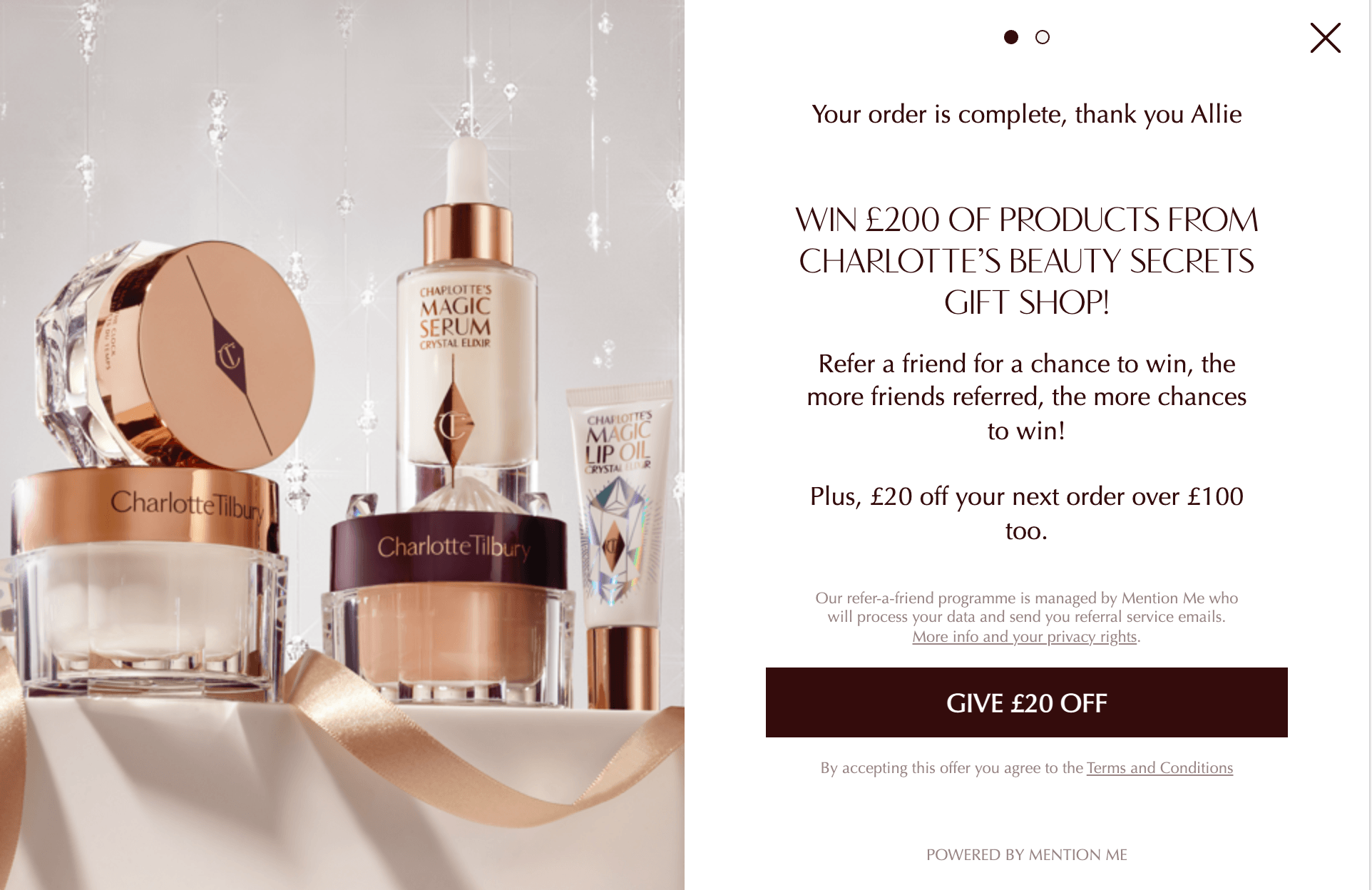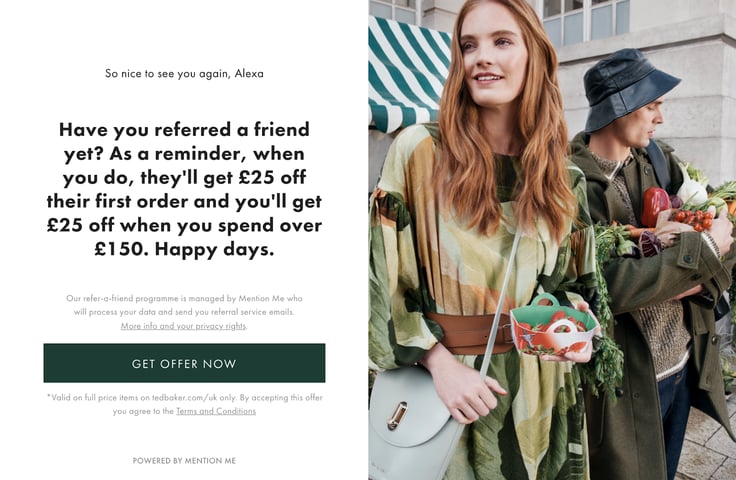The Psychology of Referral: Cialdini’s 6 Weapons of Influence

In my first post in this series, I explored the concepts of social capital and social risk, describing the feelings of confidence and commitment that a good referral offer should generate. That post outlined the end result; this one will dive into the specifics of how to achieve it.
This post will cover:
- How successful referral marketing campaigns are rooted in psychological persuasion
- The 6 ways of influence that should be in every referral marketing toolkit
- How these 6 weapons of influence help convert your referral campaign into results
Cialdini's influence and persuasion
The best referral marketing relies on a mix of persuasive ingredients to convince and compel us to act. In this blog, we’ll cover some key psychological principles that you can use to do just that – including persuasion, positive reinforcement and compelling calls to action.
We’ve drawn inspiration from the OG of influence, Robert Cialdini. Cialdini’s book, Influence: The Psychology of Persuasion, may have been published back in 1984, but it remains a must-read for any marketer looking to better understand their customers’ motivations.
Let’s look at Cialdini’s six “weapons of influence” – and how you can apply them to your referral marketing.
1. Reciprocation
"We are obligated to give back to others, the form of behavior that they have first given to us. Essentially thou shall not take without giving in return.” - Cialdini
People like to return favours. Cialdini showcases this principle by citing an infamous social experiment.
In 1974, sociologist Phillip Kunz sent out Christmas cards to 600 complete strangers. Despite not knowing a single recipient, Kunz received over 200 (largely enthusiastic) Christmas cards in return.
So what gives? Why did so many people respond to a total stranger? In short, it’s down to the rule of reciprocation. We’re conditioned to follow the rule of “give and take”.
Always clearly communicate the mutual benefits of your referral reward. If a person knows the friend who referred them will also benefit, it makes them more likely to buy.
Ted Baker highlights the win-win of a successful referral
2. Commitment and consistency
People want to be seen as consistent. It stems from a desire to align our external behaviours with our inner beliefs and values.
So, when we make a promise, we feel obliged to follow it through. When we make a decision, we like to feel like that was the right one. And when we commit to something, we like to justify it.
This rationalisation is why when someone does someone else a favour, they tend to view the recipient of their good deed more favourably after the fact.
Tip: Using Cialdini's influence for refer-a-friend programmes
Don’t be afraid to ask for repeat referrals. When a customer commits to referring your brand, the rule of consistency and commitment means they’re more likely to refer again.
Why? Because doing so reinforces their belief that the initial referral was a wise decision. Better yet, referred customers are 5x more likely to refer onwards, creating a powerful cycle of growth.
3. Social proof
Human beings are tribal by nature. If we’re uncertain how to act, we take our cue from those around us. It’s known as the bandwagon effect.
To demonstrate just how strong this urge is, Cialdini references an experiment where one or more people in a public setting suddenly fix their gaze up into the sky.
Steadily, a growing number of bystanders would join them, looking up to see what the others were staring at, until the point where crowds would form… all looking at nothing in particular. Social proof in action.
Tip: Using Cialdini's influence for refer-a-friend programmes
Look at ways you can instil social proof in your campaigns to nurture customer advocacy. You could use customer quotes, feature your overall review score, or display the number of satisfied customers who’ve taken up your offer so far.
We've found adding social proof to copy can lift the referral conversion rates at that step of the funnel between 5%-25%.
You can learn more about this in our Guide to Experimenting with your Referral Programme.
4. Liking
To demonstrate his next rule of influence, liking, Cialdini turns to Tupperware parties. These get-togethers were engineered by a Tupperware sales rep and acted as an opportunity for friends and neighbours to share, discuss and endorse Tupperware products.
Party-goers proved far more likely to buy Tupperware because it was being praised by people they knew and liked.
These shindigs teach a simple lesson – we’re prone to buy a particular product just because we like the person selling it.
Tip: Using Cialdini's influence for refer-a-friend programmes
Remind your potential new customers of the relationship between your brand and their friend. Prominently feature the referring friend’s name to instantly associate their potential purchase with positive feelings toward that person. These feelings are more powerful than the emotions even the most brilliant brand can inspire alone.
 A customer at Bought By Many gets their reward after entering their friend's name
A customer at Bought By Many gets their reward after entering their friend's name
5. Authority
Ultimately, selling your product is about building trust. And one of the 6 ways of influence is by positioning your brand as an authority.
Cialdini writes that we all have some inherent sense of duty to authority. As a result, people tend to obey authority figures.
Building an authoritative identity relies on demonstrating your professional credentials and expertise. But authority can also be earned through recommendations from other trusted parties or people.
Authority persuasion examples:
Symprove - on all things gut health
Wild Nutrition - on food-grown supplements
Gozney - on cooking the best pizzas
Tommee Tippee - on everything pregnancy and parenthood
Tip: Using Cialdini's influence for refer-a-friend programmes
The seal of authority from your referrers is a powerful tool. Using testimonials, quotes and case studies are all proven strategies to boost your conversion rate.
Try including any positive feedback you’ve collected from the referring friend in the referral offer page (E.g. 'John gave this product 5 stars').
6. Scarcity
The less of something there is, the more you want it. This is scarcity, a principle used by the majority of e-commerce sites for one reason: it works. From flash sales to limited product runs, the principle of scarcity taps into our fear of missing out.
Sites like booking.com use scarcity to tell customers how many people have viewed a hotel, how many have booked, and, vitally, how few rooms are left. Tactics like this heighten anxiety we could miss out and generate a sense of urgency to spur us on to take action.
An Experian report found that compared to the average marketing email, those driving a sense of urgency resulted in 2x higher transaction rates.
Tip: Using Cialdini's influence for refer-a-friend programmes
In referral, scarcity can be used in several ways. From restricting how long a new customer has to claim their referral reward, to limiting how long a referrer can share that offer.
You can also use scarcity during promotion periods when you increase or change the referral offer for a limited period (a week or a weekend, perhaps) to drive activity.
On Black Friday, for example, luxury beauty brand Charlotte Tilbury ran a time-limited promotion giving referring customers and their friends the chance to win £200 worth of products.
 Charlotte Tilbury runs a time-limited referral promotion for Black Friday
Charlotte Tilbury runs a time-limited referral promotion for Black Friday
Cialdini's influence: Summary
If you're setting up your own referral programme (great choice), think about putting some of the above weapons of influence to use. They could be the differentiators that take your programme to the next level.

Andy Cockburn
Read more >
Never miss another update
Subscribe to our blog and get monthly emails packed full of the latest marketing trends and tips








